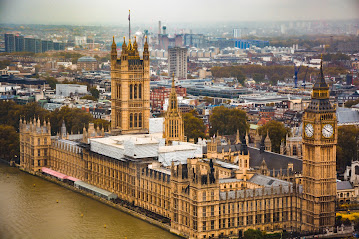Feline Residents of the Palace of Westminster
The Palace of Westminster, which is home to the Houses of Parliament in the United Kingdom, is known for its rich history and stunning architecture. However, there is also a lesser-known aspect of the Palace that is equally fascinating: its resident cat population.
These cats are officially employed by the Palace as "mousers," tasked with keeping the buildings free of mice and other rodents. The tradition of cats residing in the British government dates back to the 16th century, during the reign of Elizabeth I. It is said that she was a cat lover and kept a number of cats in the palace. The tradition continued over the centuries, with cats being employed in government buildings to control mice and other pests.
In the Houses of Parliament, the tradition of cats dates back to the 19th century. At that time, mice were a serious problem in the Palace of Westminster, and so cats were brought in to control the rodent population. Since then, cats have been a fixture in the halls of power in Britain, with each generation of cats passing the mantle on to the next.
The current cats of Westminster are descendants of the original cats that were brought in to control the mice. They are cared for by a team of dedicated volunteers who ensure that they are well-fed and looked after. The cats have become a beloved part of British political life, and their presence is seen as a symbol of the long and storied history of British democracy.
Today, the Palace of Westminster has several resident cats, each with their own unique personality and quirks. One of the most well-known of these cats is Larry, who has been the official Chief Mouser to the Cabinet Office since 2011. Larry is a tabby cat who was brought in to deal with a rodent problem in Downing Street, the residence of the UK Prime Minister, before being promoted to his current role. Larry is a popular figure in British politics, with his daily exploits often reported in the media.
Another notable feline resident of the Palace of Westminster is Palmerston, who is the official Chief Mouser at the Foreign and Commonwealth Office. Palmerston was named after the UK's longest-serving Foreign Secretary, Viscount Palmerston, and is known for his mischievous nature. Despite being a relatively recent addition to the Palace's cat population, Palmerston has already become a popular figure, with his own social media accounts and a following of dedicated fans.
The Palace of Westminster's cat population also includes Gladstone, who is the official Chief Mouser at the Treasury, and a number of other cats who live in and around the Palace's buildings. These cats are cared for by a team of dedicated staff, who ensure that they are well-fed and comfortable in their surroundings.
In addition to their important role as mousers, the cats of the Palace of Westminster have become beloved figures in British politics. They are often seen lounging in the sun or playing in the gardens, and have even been known to interrupt important meetings and proceedings. But despite their occasional antics, these feline residents are an important part of the Palace's history and tradition, and their contribution to keeping the buildings free of rodents is greatly appreciated.
Thanks for reading,
Spec



Comments
Post a Comment